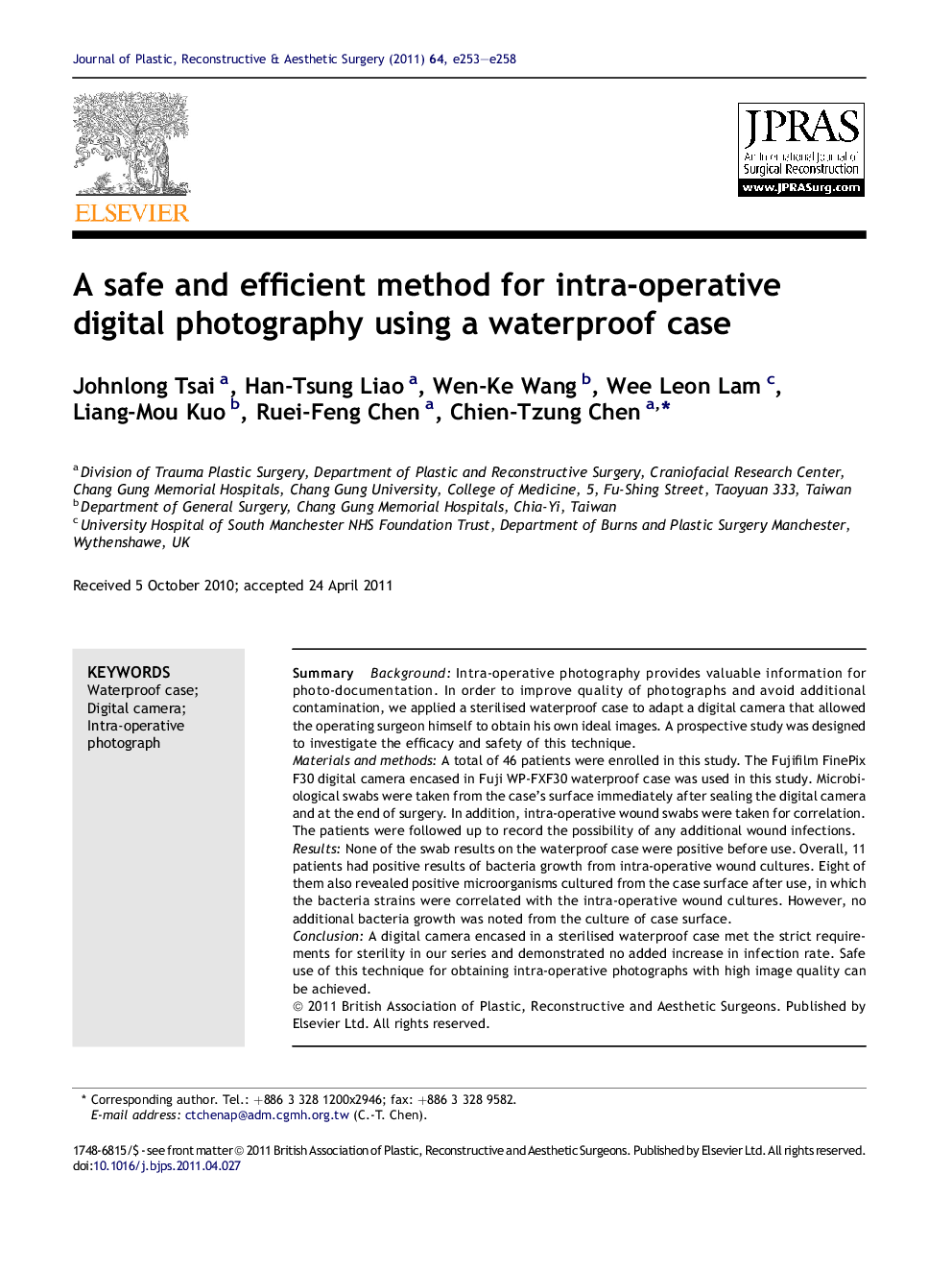| Article ID | Journal | Published Year | Pages | File Type |
|---|---|---|---|---|
| 4120308 | Journal of Plastic, Reconstructive & Aesthetic Surgery | 2011 | 6 Pages |
SummaryBackgroundIntra-operative photography provides valuable information for photo-documentation. In order to improve quality of photographs and avoid additional contamination, we applied a sterilised waterproof case to adapt a digital camera that allowed the operating surgeon himself to obtain his own ideal images. A prospective study was designed to investigate the efficacy and safety of this technique.Materials and methodsA total of 46 patients were enrolled in this study. The Fujifilm FinePix F30 digital camera encased in Fuji WP-FXF30 waterproof case was used in this study. Microbiological swabs were taken from the case’s surface immediately after sealing the digital camera and at the end of surgery. In addition, intra-operative wound swabs were taken for correlation. The patients were followed up to record the possibility of any additional wound infections.ResultsNone of the swab results on the waterproof case were positive before use. Overall, 11 patients had positive results of bacteria growth from intra-operative wound cultures. Eight of them also revealed positive microorganisms cultured from the case surface after use, in which the bacteria strains were correlated with the intra-operative wound cultures. However, no additional bacteria growth was noted from the culture of case surface.ConclusionA digital camera encased in a sterilised waterproof case met the strict requirements for sterility in our series and demonstrated no added increase in infection rate. Safe use of this technique for obtaining intra-operative photographs with high image quality can be achieved.
